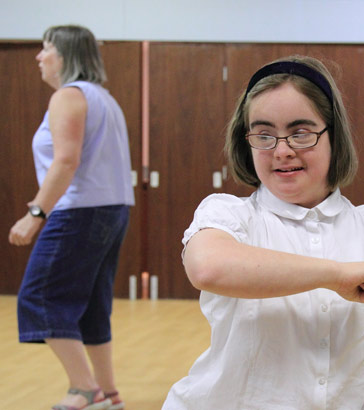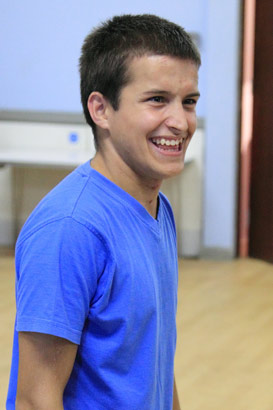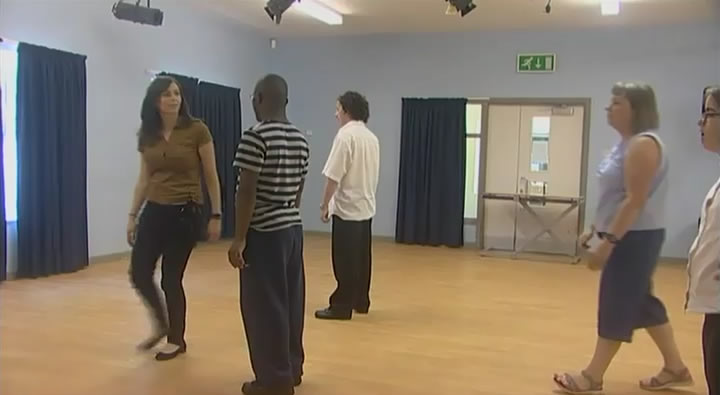
Dance is only accorded a sub-section of the National Curriculum, being part of the PE
Curriculum. There are strong arguments for suggesting that it ought to have a much higher profile within the SLD Curriculum.
All writers on dance education recognise the significance of Rudolph Laban's development of dance as an educational tool
in the 1930s and 40s (Laban, 1948). These ideas were further progressed by Veronica Sherborne, with her dual concepts of awareness
of self and the awareness of others (Sherborne, 1990).

Sherborne argued that an improved awareness of self is gained through movement experiences that help the person physically
concentrate on what is happening to their body. 'Listening via touch' through 'feelings of inner physical sensation' contrasts
with our usual way of looking and thinking. This method tempers self-criticism and allows those with learning difficulties
to develop their self-esteem and confidence on a physical and emotional level.
The next step (she argues) is to develop an awareness of others by learning to move around and interact with others in ways
that encourage the further development of trust and the building of positive relationships. These movement experiences enable
the person to be appropriately supported and encourage them to explore their unique creativity through shared movement activities
(Sherborne, 1990).

There are real benefits and opportunities to be gained from using dance creatively with pupils with learning difficulties.
The legacy of these early pioneers in educational dance (such as Laban and Sherborne) is an emphasis on the development
of the whole person through movement. Compared to gymnastics, physical ability is of a lesser consideration in educational
dance. Rather, it is the way an individual lends subjective significance and meaning to movement in dance that is esteemed.
The point is that movement work in educational dance is not competitive, it is not concerned with performing objective skills
as an end in themselves. Rather, they are harnessed in dance education as a means to an end....
Peter, 1997

....This is not to imply that the development of children's physical skill is left as a matter of chance. It is the responsibility
of the teachers of dance to foster the development of their pupils' movement repertoire, from which they may then select and
choose more purposefully and sensitively in order to create meanings in dance. Thus they may be enabled to order and lend
significance to their movements, and learn that dance may have a communicative impact. A case of 'learning how to dance whilst
doing it'!
Peter, 1997
In this clip, a dance teacher establishes the routine and structure within a dance lesson, with a particular focus on each pupil's physical development. The next stage will be to extend each learner's own creative and choreographic skills so that they can design their own dances and movement and learn from each other.
In what ways does the dance teacher believe that children benefit from dance?
Click for the answer
Their confidence grows, they become more enthusiastic and it provides them with real opportunities to express themselves. It cuts through their disability and is a really great way for them to shine. Recently, they performed their dance routine at an old people's home, the audience loved it.

Laban, R. (1948) Modern Educational Dance, Plymouth: Macdonald and Evans.
Peter, M. (1997) Making Dance Special, London: David Fulton.
Sherborne, V. (1990) Developmental Movement for Children, Cambridge: Cambridge University Press.
